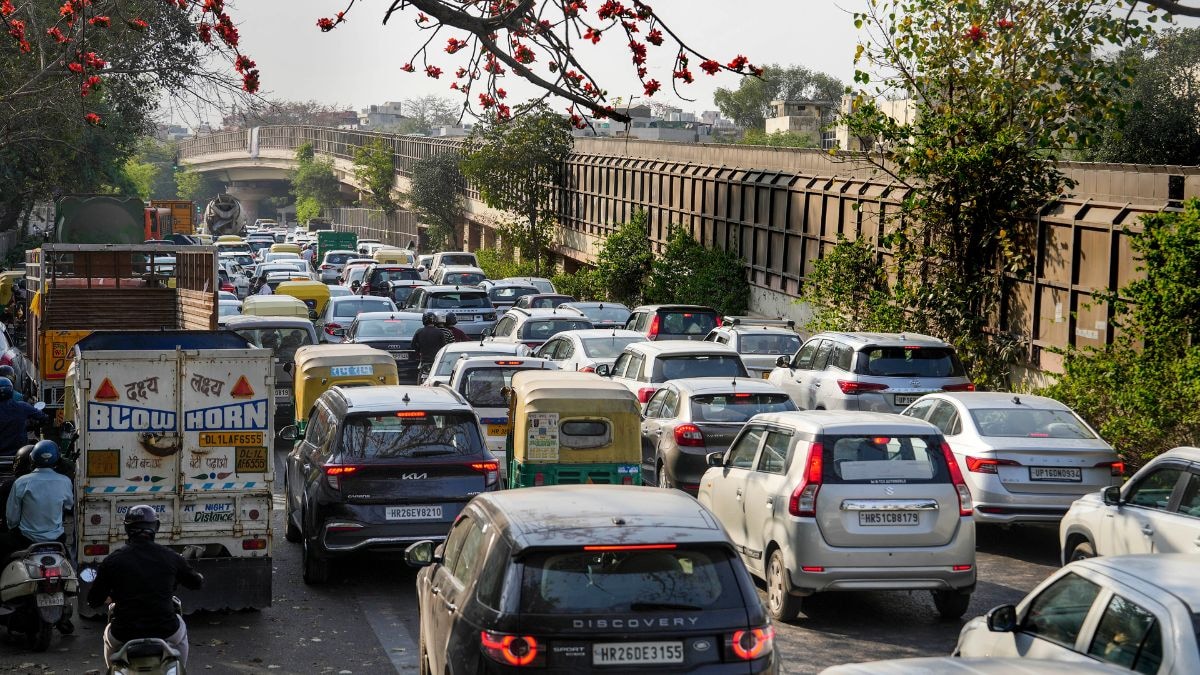Delhi’s ban on refuelling end-of-life vehicles from Tuesday has ignited a fierce debate. Many feel targeted and ask ‘is it a punishment for those who maintain their cars well?’
read more
Delhi’s ban on refuelling end-of-life vehicles — effective from Tuesday — has triggered intense public debate, with netizens and residents questioning its fairness, economic impact, and underlying motives. The policy denies refuelling for diesel vehicles over 10 years and petrol vehicles over 15 years at petrol pumps (gas stations), enforced via Automatic Number Plate Recognition (ANPR) cameras linked to the VAHAN database. Violators face fines up to Rs 10,000 and vehicle impoundment.
The sweeping ban on refuelling end-of-life vehicles — petrol cars over 15 years old and diesel vehicles over 10 — saw many feeling targeted and voicing concerns about fairness, affordability, and the policy’s real motives.
What they complaint about
They complained that the policy is like punishment for those who maintain their cars well. “Why should responsible owners who regularly service and maintain their vehicles be penalised simply because of the car’s age,” asked one user.
Many others echoed this sentiment, arguing that the blanket ban fails to distinguish between well-kept, low-emission vehicles and neglected ones, making it seem arbitrary and unjust.
The financial burden is a major worry. “What if I cannot afford a new vehicle?” This is a question that seems to resonate across the middle class. For families already stretched by inflation and EMIs, being forced to scrap a functioning vehicle and buy a new one feels like a direct hit. Critics suggest the policy could keep the middle class perpetually on EMIs, as replacing vehicles every decade becomes the new normal.
#WATCH | Delhi Police seized two end-of-life vehicles (ELVs) – 15-year-old petrol and 10-year-old diesel vehicles from a petrol pump.
Ashok Kumar, Traffic Inspector, says “Two motorcycles have been seized from here. As per guidelines, we will hand over to the registered vehicle… pic.twitter.com/p4VE3fOxAU
— ANI (@ANI) July 1, 2025
Scepticism about the government’s motives is rife. Some see the ban as appeasement of car makers and a boost for government coffers via GST on new sales. “It’s not about pollution, it’s about pushing us to buy new cars and fill the treasury,” wrote one commenter.
Others argue that while authorities are quick to scrap old vehicles, they have failed to address Delhi’s bad roads, which also contribute to pollution and vehicle wear.
Inconsistency in policy?
The policy’s inconsistency — 10 years for diesel, 15 for petrol — has also come under fire. “Pollution is the same for all vehicles. Why not have a single rule,” one user asked, pointing to the confusion and perceived arbitrariness of the regulations.
Some have taken a satirical jab, asking, “What about end-of-life politicians? Why not have a cap for them?” Others warn that today it’s vehicles, but tomorrow it will be ACs and fridges, expressing fears about creeping restrictions on other personal assets.
While supporters argue that vehicular emissions account for over half of Delhi’s local pollution and drastic steps are needed, critics remain unconvinced that the ban is either fair or effective. With over 62 lakh vehicles affected in Delhi alone and millions more in neighbouring states, the policy’s social and economic impact is set to be profound.
As enforcement teams, police, and Automatic Number Plate Recognition (ANPR) cameras monitor nearly every fuel station, the coming weeks will test not only the government’s resolve but also the patience and adaptability of Delhi’s motorists.
It’s not limited to Delhi only
India hosts 6.1 crore vehicles aged 15+ years, constituting 17.9 per cent of the nation’s 34.15 crore registered vehicles. Delhi bears the highest burden: 41 per cent of its registered vehicles (approx. 32.6 lakh out of 79.46 lakh) are over 15 years old. This dwarfs states like Bihar (2.4 per cent old vehicles) and Maharashtra (9.4 per cent). The city also has an estimated 62 lakh end-of-life vehicles (combining petrol 15+ years and diesel 10+ years).
The law
The ban originates from a 2014 National Green Tribunal (NGT) order to curb vehicular emissions, which contribute over 50 per cent of Delhi’s local pollution. Implementation stalled until 2025 due to legal challenges and policy gaps. The Delhi government revived the drive in February 2024 after court directives, citing:
-
Fitness failures: Only 6.27 per cent of 47.51 lakh national end-of-life (EOL) vehicles were deregistered (2018–21), leaving 44.53 lakh polluting vehicles operational.
-
Seasonal urgency: Winter pollution spikes necessitate drastic measures.
Pollution is a real crisis
Delhi consistently ranks among the world’s most polluted cities:
-
AQI: Delhi’s annual AQI averaged 169 in 2024, peaking at 290 during November.
-
National comparison: While metros like Mumbai and Kolkata fare better, Delhi’s vehicular density (79+ lakh vehicles) exacerbates its crisis.
What about implementation challenges?
Authorities too face logistical hurdles in implementing the law that originated with a tribunal order.
-
Enforcement: 500+ fuel stations use ANPR cameras, but evasion risks persist.
-
Scrappage lag: Only 1.4 lakh Delhi vehicles were scrapped voluntarily by 2023 — far below the 6.23 lakh that obtained NOCs for resale elsewhere.
-
Interstate coordination: The policy is mandated to expand to NCR cities by April 2026, requiring synchronised databases.
Removing 62 lakh high-emission vehicles could significantly improve air quality in Delhi, but implementing it remains a big challenge. The policy’s success depends on balancing environmental urgency with socioeconomic realities — a challenge for a city where over one of every four vehicles is now “illegal” for refuelling.





















